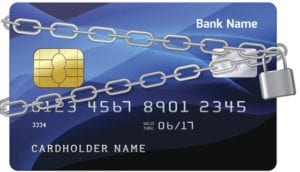In the highly regulated world of banking, ensuring that customer interactions are fair, transparent, and respectful is paramount. Financial institutions must navigate a complex landscape of regulations, with UDAAP (Unfair, Deceptive, or Abusive Acts or Practices) at the forefront of compliance requirements. UDAAP rules are not just another set of bureaucratic obstacles; they reflect the very core of ethical banking practices. When banks fall short of these standards, they risk hefty fines, reputational damage, and the loss of consumer trust. Understanding and implementing UDAAP compliance measures are essential for the long-term health of any financial institution.
What Does UDAAP Stand For?
UDAAP is an acronym for Unfair, Deceptive, or Abusive Acts or Practices. The concept was introduced as part of the Dodd-Frank Wall Street Reform and Consumer Protection Act of 2010, aimed at holding financial institutions accountable for their treatment of consumers.
- Unfair practices cause substantial injury to consumers that they cannot reasonably avoid, and the harm outweighs any benefits.
- Deceptive practices involve misleading consumers through misrepresentation or omission of critical information, which leads them to make uninformed financial decisions.
- Abusive practices take advantage of vulnerable consumers by limiting their ability to understand terms or exploiting a lack of knowledge about financial products.
These three pillars of UDAAP ensure that consumers are protected from unethical practices by the institutions they trust with their financial well-being.
What is UDAAP Compliance?
UDAAP compliance refers to a bank’s responsibility to adhere to regulations that prevent unfair, deceptive, or abusive actions against consumers. Compliance goes beyond simply avoiding illegal behavior; it encompasses any action or omission that could mislead or harm a consumer. UDAAP compliance programs often include policies and procedures, employee training, regular audits, and monitoring of consumer complaints.
Financial institutions must carefully evaluate their products, marketing materials, and customer service practices to ensure they align with UDAAP regulations. From product disclosures to customer interactions, everything must be clear, transparent, and designed to prevent harm. Non-compliance with UDAAP can lead to enforcement actions, including fines and reputational damage, making it essential for banks to have robust UDAAP compliance frameworks in place.
Why is it Important to Stay Compliant as a Banking Professional?
Staying compliant with UDAAP regulations is not just a legal necessity but also a moral obligation for banking professionals. The importance of compliance can be broken down into several key factors:
Protecting Consumer Trust
Banks rely on their customers’ trust to build long-lasting relationships. UDAAP violations can severely damage a bank’s reputation, leading to a loss of consumer confidence. Compliance ensures that customers feel safe and respected in their interactions with the bank, reinforcing trust.
Avoiding Regulatory Penalties
Failure to comply with UDAAP regulations can lead to significant financial penalties. Regulatory bodies, such as the Consumer Financial Protection Bureau (CFPB), have the authority to impose fines for non-compliance. These penalties can range from thousands to millions of dollars, impacting the financial health of an institution.
Preventing Reputational Damage
In the age of social media and digital transparency, news of UDAAP violations can spread quickly. Reputational harm can lead to customer attrition, a reduction in new business, and difficulties in securing partnerships or investments. Banks must avoid any practices that could be seen as harmful or exploitative to their consumers.
Reducing Litigation Risks
Banks that engage in unfair, deceptive, or abusive practices expose themselves to lawsuits. Legal disputes are costly and time-consuming, often requiring banks to divert resources from core activities. Maintaining UDAAP compliance reduces the risk of such legal challenges.
Enhancing Customer Satisfaction
Compliant banking institutions tend to offer clearer, more user-friendly products and services. By ensuring that customers fully understand the terms and benefits of banking products, banks can enhance overall customer satisfaction and foster long-term loyalty.
Who Enforces UDAAP Compliance?
UDAAP compliance is primarily enforced by the CFPB, established in 2010 under the Dodd-Frank Act. The CFPB has the authority to investigate UDAAP violations and impose fines or other penalties on financial institutions that fail to adhere to the law.
In addition to the CFPB, other regulatory bodies also have oversight in enforcing UDAAP compliance, including:
Federal Deposit Insurance Corporation (FDIC): The FDIC ensures that institutions it insures comply with UDAAP.
Office of the Comptroller of the Currency (OCC): The OCC oversees national banks and ensures they are meeting UDAAP standards.
Federal Trade Commission (FTC): The FTC has broad authority over non-bank financial institutions and can enforce UDAAP compliance for them.
These regulatory bodies work together to create a network of enforcement that keeps the banking industry accountable for its actions.
The Key Differences Between Unfair, Deceptive, and Abusive
While the terms unfair, deceptive, and abusive might seem similar, they have distinct legal meanings under UDAAP regulations. Understanding the differences is crucial for maintaining compliance.
Unfair
An unfair practice is one that causes significant injury to a consumer, cannot reasonably be avoided by the consumer, and does not offer enough benefits to outweigh the harm. For example, charging hidden fees that consumers did not anticipate and cannot avoid would be considered unfair.
Deceptive
A deceptive practice involves misleading consumers by providing false or incomplete information that affects their decision-making. This could be an unclear product disclosure or a misleading marketing campaign. For example, advertising a “free” service that actually includes hidden charges would be deemed deceptive.
Abusive
An abusive practice occurs when a bank takes advantage of a consumer’s lack of understanding or ability to protect their interests. For instance, selling complex financial products to consumers without explaining the risks involved can be seen as abusive. It can also include exploiting a consumer’s inability to evaluate the costs or benefits of a financial product.
Examples of UDAAP Violations
Violating UDAAP can occur in many forms, and banking professionals must be vigilant in identifying and avoiding these pitfalls. Here are some common examples:
Hidden Fees
Charging fees that are not clearly disclosed in product agreements or marketing materials is a common UDAAP violation. These hidden fees can take many forms, including maintenance fees on checking accounts or undisclosed penalties for early loan repayment. When consumers are unaware of these fees, they may feel blindsided and financially harmed, leading to complaints and potential enforcement actions.
Misleading Marketing
Misleading marketing includes advertisements that exaggerate the benefits of a product or service while omitting critical details about risks or costs. For example, promoting a credit card with “zero interest” without clearly explaining the introductory period or the eventual rate increase can deceive consumers into making uninformed choices that affect their financial well-being.
Abusive Sales Tactics
Aggressive sales tactics target vulnerable populations, such as the elderly or financially inexperienced, pressuring them into purchasing unnecessary or unsuitable products. This includes upselling high-interest loans or pushing complex investment products without fully explaining the risks. Such practices exploit consumer trust and violate UDAAP regulations.
Failure to Disclose Terms Clearly
Failure to clearly disclose terms and conditions, such as interest rates, loan repayment schedules, or penalties, can lead to significant misunderstandings and financial hardship for customers. Incomplete or confusing disclosures make it difficult for consumers to make informed decisions, leading to unfair outcomes.
Bait-and-Switch Tactics
A classic UDAAP violation, bait-and-switch tactics involve advertising a product or service under favorable terms, only to change those terms after the customer commits. For instance, offering a loan with low interest but switching to a higher rate once the application is finalized is both deceptive and unfair.
How to Remain Compliant for UDAAP
Remaining compliant with UDAAP regulations requires a proactive approach. Here are several tips for banking institutions:
Educate Employees
The first step in maintaining compliance is ensuring that all employees understand UDAAP rules. Regular training should be part of every bank’s internal procedures.
Monitor Marketing Materials
All marketing communications should be reviewed for accuracy and transparency. Clear, truthful messaging helps prevent deceptive practices.
Review Product Disclosures
Make sure that product terms are presented clearly and without any hidden conditions or fees. Customers should always be able to understand what they are signing up for fully.
Establish a Complaint Management System
Banks should actively monitor consumer complaints to identify potential UDAAP risks. A robust complaint management system can act as an early warning system for practices that may lead to violations.
Conduct Regular Audits
Internal audits can help identify areas where the bank may be at risk of UDAAP violations. Regular reviews of products, services, and practices ensure that compliance efforts are always up to date.
Simplify Products for Consumers
Ensure that all financial products are easy for consumers to understand. Simplifying terms and conditions can go a long way in preventing both abusive and deceptive practices.
Explore UDAAP Compliance with BankersHub
As a leading provider of financial certifications and training solutions, BankersHub offers comprehensive resources to help financial institutions stay compliant with evolving regulations. Join us for our upcoming webinar, “UDAAP: Avoiding Customer Harm & Monitoring for Consumer Complaints,” on September 30, 2024. This webinar will dive deep into UDAAP compliance, exploring practical strategies to prevent violations and maintain consumer trust. Don’t miss the opportunity to learn from industry experts and stay ahead of regulatory requirements. Register for the webinar today to strengthen your UDAAP compliance program!








